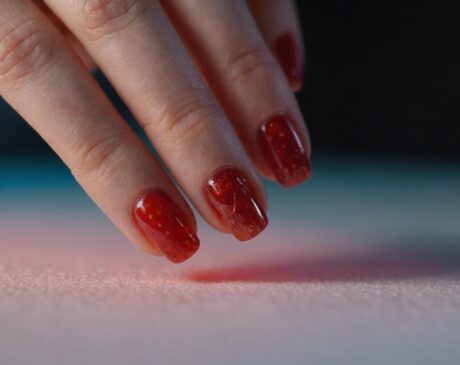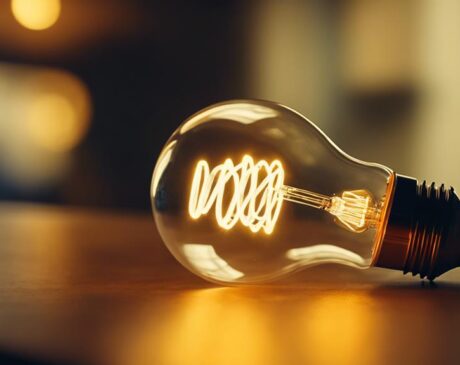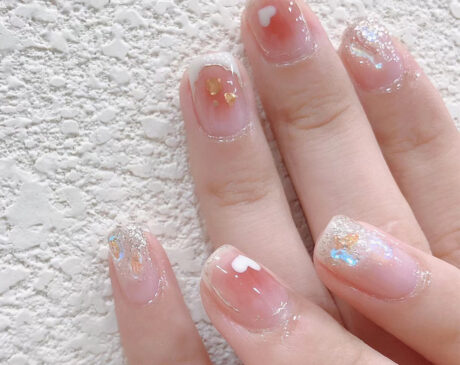Why Does My Nail Polish Never Fully Dry?
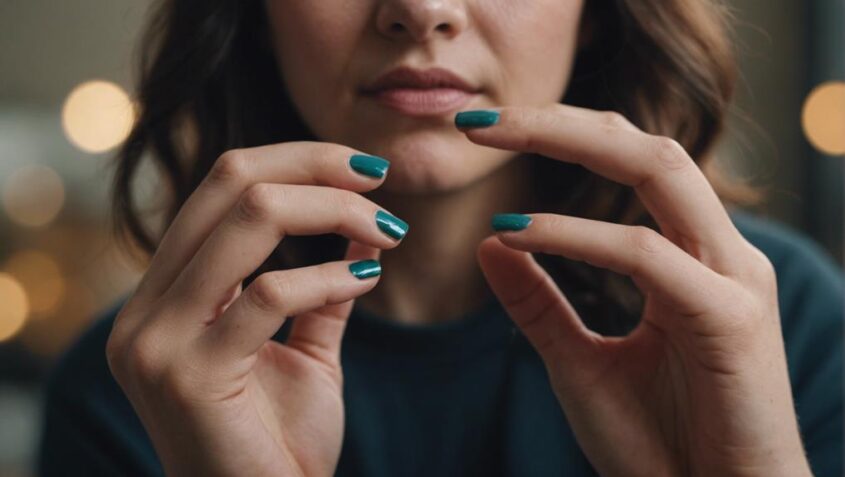
Inadequate nail polish drying can result from various factors. Apply thin, even coats avoiding cuticle contact. Opt for quick-dry products and quality base/top coats. Humidity affects drying; high levels slow the process. Consider temperature balance for optimal drying. Applying thick layers hinders evaporation. Utilize quality polish with advanced formulas for faster drying. Ensure proper airflow in a well-ventilated area. Check base and top coat compatibility. Maintain nail health and consider drying aids for efficient drying. Understanding these factors can help resolve the issue of nail polish not fully drying. Give your nail care routine a boost for faster drying results.
Key Takeaways
- Apply thin, even coats to allow for quicker drying.
- Control humidity levels for optimal evaporation rates.
- Use high-quality polishes for faster and lasting results.
- Ensure proper ventilation to avoid thick layers hindering drying.
- Consider quick-dry products or sprays for efficient drying.
Incorrect Application Technique
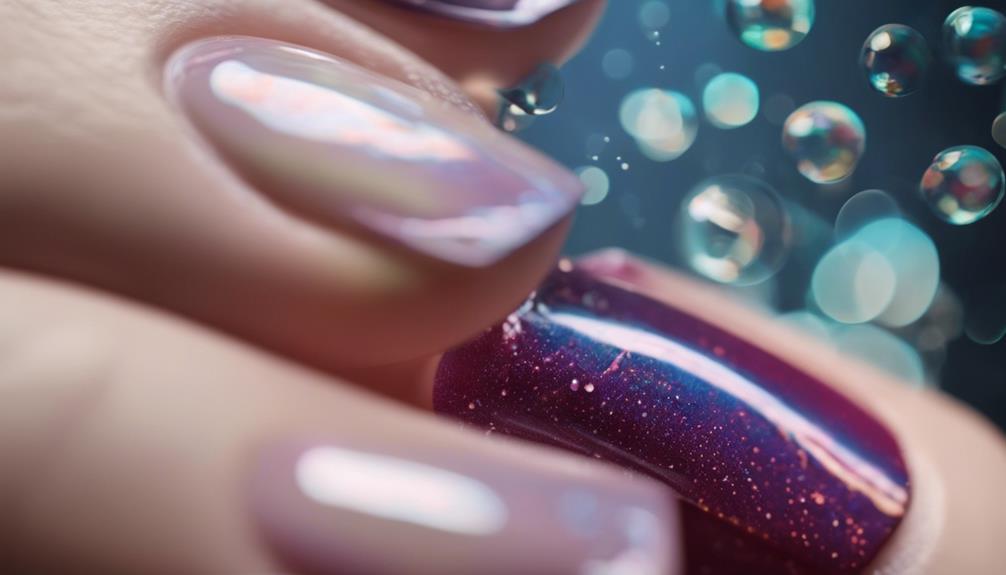
Improper application techniques can significantly delay the drying process of nail polish. When applying nail polish, it is crucial to use thin, even coats to promote quicker drying. Thick layers take longer to dry as the solvents in the polish struggle to evaporate evenly. Additionally, applying polish too close to the cuticles or skin can lead to smudging and create barriers that prevent proper airflow, hindering the drying process.
To enhance drying time, utilize quick-dry products or sprays designed to accelerate the evaporation of solvents in the polish. These innovative solutions can help set the polish faster, reducing the risk of smudges or dents. Furthermore, consider investing in a high-quality base coat and top coat to seal in the color and protect against external factors that may prolong drying time. By adopting these advanced techniques and products, nail polish enthusiasts can achieve faster drying times and flawless manicures.
Humidity and Temperature Levels
Humidity and temperature levels play a crucial role in the drying process of nail polish. High humidity can slow down drying time, leading to smudges and imperfections, while low humidity can cause the polish to dry too quickly, resulting in a brittle finish. Similarly, extreme temperatures can also impact the consistency and overall drying time of nail polish formulations.
Impact of Humidity
The drying process of nail polish can be significantly influenced by the prevailing levels of moisture in the air, as well as the temperature conditions. Humidity plays a crucial role in the evaporation of solvents in nail polish. High humidity levels slow down the evaporation process, leading to prolonged drying times. When the air is humid, the moisture in the atmosphere hinders the solvent molecules from escaping, causing the polish to remain wet. On the other hand, low humidity levels promote faster evaporation, aiding in quicker drying of the nail polish. Therefore, it is essential to consider the impact of humidity on the drying time of nail polish to achieve optimal results.
Influence of Temperature
The interaction between temperature levels and humidity is a key factor influencing the drying process of nail polish. Temperature plays a crucial role in determining the rate at which nail polish dries. Higher temperatures generally expedite the evaporation of solvents in the polish, leading to a quicker drying time. However, excessively high temperatures can cause the polish to bubble or dry unevenly. On the other hand, lower temperatures slow down the evaporation process, prolonging the drying time. It is essential to find a balance in temperature conditions to optimize the drying process. Additionally, humidity levels can impact drying time, with higher humidity levels generally prolonging the process due to reduced evaporation rates. Achieving the right balance between temperature and humidity is key to ensuring properly dried nail polish.
Drying Time Factors
Optimizing the interplay between temperature levels and humidity is essential for ensuring efficient drying time when applying nail polish. Humidity plays a significant role in the drying process of nail polish. High humidity levels can slow down the evaporation of solvents in the polish, leading to longer drying times. Conversely, low humidity levels can cause the polish to dry too quickly, resulting in a less smooth finish. Temperature also impacts drying time, with higher temperatures accelerating the evaporation of solvents. However, excessively high temperatures can cause bubbles to form in the polish. To achieve optimal drying conditions, aim for a moderate temperature range of around 70-75°F (21-24°C) and a humidity level of about 50%. Experimenting with these factors can help expedite the drying process and enhance the overall quality of your manicure.
Thick Layers of Nail Polish
Applying excessive layers of nail polish can impede the drying process and lead to incomplete drying. When multiple thick coats are applied, the nail polish takes significantly longer to dry, increasing the risk of smudges and dents. To ensure your nail polish dries properly, consider the following:
- Thin Layers: Applying thin, even layers allows each coat to dry more efficiently, reducing overall drying time.
- Quick-Dry Products: Utilize quick-dry topcoats or nail polish formulas to expedite the drying process and achieve a flawless finish in less time.
- Proper Ventilation: Ensure the area where you are applying nail polish is well-ventilated. Good airflow helps the solvents in the polish evaporate faster, aiding in quicker drying times.
Quality of Nail Polish
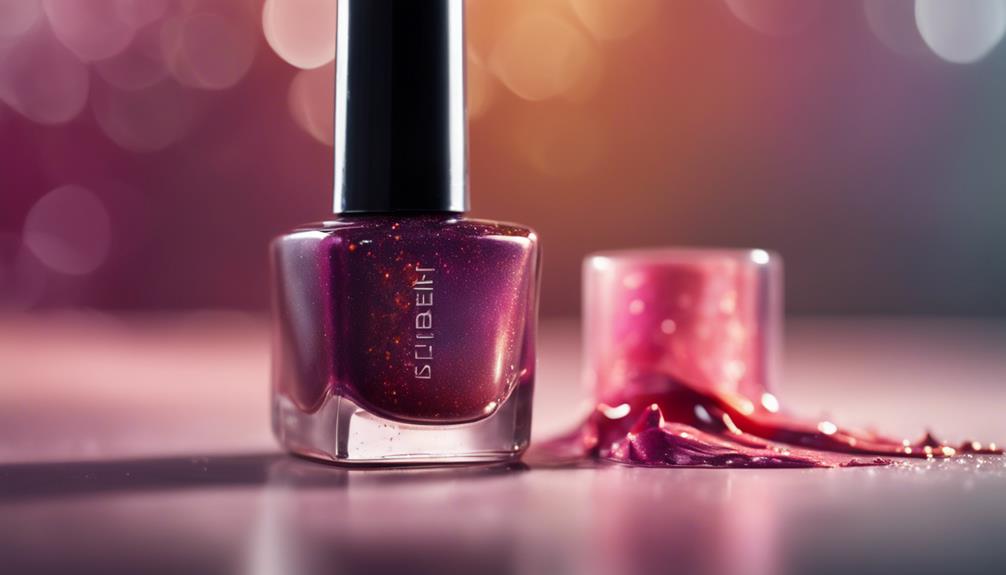
Enhancing the longevity and performance of nail polish hinges significantly on the quality of the product selected. High-quality nail polishes are formulated with advanced technologies that promote faster drying times, increased durability, and vibrant color payoff. When choosing a nail polish, opt for brands that prioritize quality ingredients, such as chip-resistant polymers and pigments that resist fading. These premium formulations not only provide a smooth and flawless application but also contribute to a longer-lasting manicure.
Investing in quality nail polishes can also prevent issues like chipping, cracking, and uneven drying. Superior products are designed to adhere better to the nail surface, reducing the likelihood of premature wear and tear. Additionally, high-quality nail polishes often dry more efficiently, saving you time and frustration during the manicure process.
Innovations in nail polish technology continue to push boundaries, offering consumers a wide range of high-quality options to choose from. By selecting top-tier nail polishes, you can elevate your manicure experience and enjoy beautiful, long-lasting results.
Insufficient Drying Time
Insufficient drying time can be attributed to factors such as short waiting periods between coats, applying thick layers of nail polish, and working in a humid environment. These elements can impede the drying process and result in nail polish that remains tacky or smudges easily. Understanding how these factors influence drying time is crucial for achieving a flawless and long-lasting manicure.
Short Waiting Periods
Insufficient drying time is a frequent reason why nail polish doesn't dry fully. When individuals rush the drying process, the nail polish remains tacky and prone to smudging. To address this issue effectively, consider the following:
- Airflow: Ensure proper ventilation or use a fan to expedite drying.
- Quick-Dry Products: Invest in fast-drying topcoats or nail polish formulas.
- LED Nail Lamps: Utilize LED nail lamps for quicker and more efficient drying.
Thick Layers Applied
When nail polish is applied in thick layers, it can lead to insufficient drying time, resulting in a lack of full drying and potential smudging issues. Thick layers of nail polish take longer to dry as each layer needs to evaporate to allow the solvent to escape. This extended drying time can prevent the polish from curing properly, leaving it vulnerable to smudges and dents. To combat this issue, consider applying multiple thin coats instead of fewer thick ones. Thin layers dry quicker and more evenly, ensuring a smoother and more durable finish. By adjusting your application technique, you can achieve faster drying times and flawless nail polish results.
Humid Environment Impact
In high humidity environments, nail polish may experience prolonged drying times, leading to potential issues with incomplete curing and smudging. This can be frustrating for individuals seeking a quick and flawless manicure. Factors such as moisture in the air can hinder the evaporation of solvents in the polish, delaying the drying process significantly. To combat this, consider the following innovative solutions:
- Utilizing quick-dry nail polish formulas.
- Applying thin layers of polish to promote faster drying.
- Using a fan or cool air blower to help speed up the evaporation process.
Incompatible Base and Top Coats
Using incompatible base and top coats in your nail polish application can result in long drying times and a lack of full dryness. When the base coat and top coat formulas are not compatible, they may not adhere well to each other, leading to issues like smudging, denting, or prolonged drying times. To ensure a seamless nail polish application and efficient drying process, it is essential to use a base coat and top coat from the same product line or ones specifically designed to work together.
Innovations in nail care have led to the development of base and top coats with advanced formulas that not only enhance the longevity of your manicure but also promote faster drying times. Look for products that offer quick-dry capabilities and compatibility with a wide range of nail polish brands for maximum convenience and efficiency. By investing in high-quality base and top coats that are designed to work harmoniously, you can achieve a flawless finish with reduced drying time, allowing you to enjoy your manicure without the frustration of waiting for it to dry completely.
Underlying Nail Health Issues
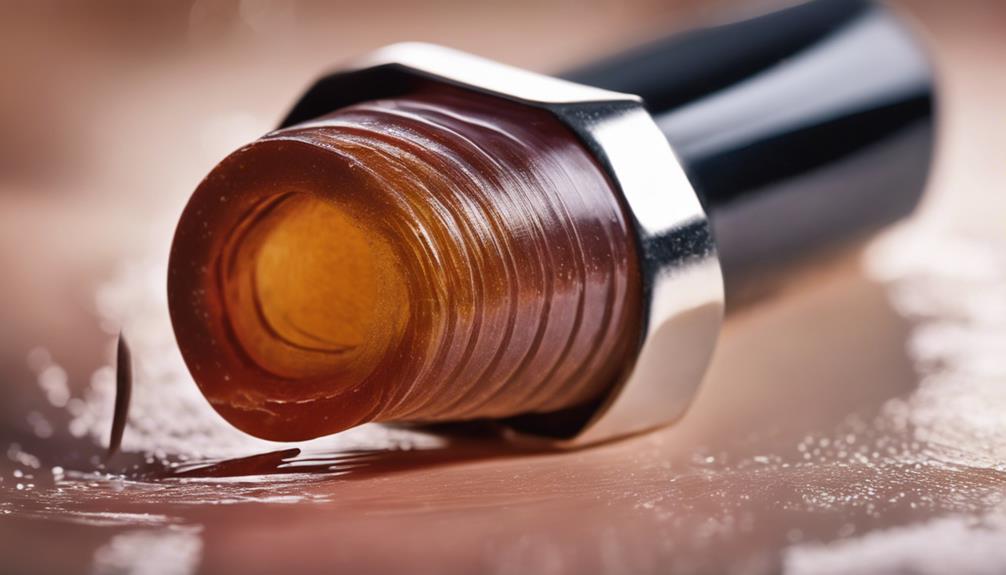
Addressing underlying nail health issues is crucial for ensuring optimal nail condition and promoting overall nail polish performance. When seeking to improve the drying time and longevity of your nail polish, consider the following factors:
- Hydration Levels: Proper nail hydration is essential for nail health and can impact how well nail polish dries. Dehydrated nails may absorb moisture from the polish, leading to extended drying times.
- Nutritional Deficiencies: Inadequate intake of essential nutrients like biotin and vitamins can weaken nails, affecting polish adherence and drying. Ensuring a balanced diet can enhance nail health and polish performance.
- Nail Structure: Brittle or damaged nails are more prone to chipping and peeling, causing nail polish to dry unevenly or not at all. Strengthening treatments can improve nail structure and aid in polish drying.
Lack of Nail Polish Drying Aids
Insufficient utilization of nail polish drying aids can significantly impede the efficient and timely drying of nail polish, resulting in suboptimal outcomes. Nail polish drying aids play a crucial role in accelerating the evaporation of solvents present in nail polish, facilitating a quick and smudge-free finish. Products like quick-dry sprays, drops, or fast-drying topcoats contain ingredients that promote rapid solvent evaporation, leading to faster drying times. By neglecting to incorporate these aids into your nail care routine, you may experience prolonged drying times, which can increase the likelihood of smudges, dents, or imperfections on your freshly painted nails.
To enhance the efficiency of your nail polish application, consider integrating innovative drying aids into your regimen. Quick-dry sprays utilize advanced formulas designed to rapidly set nail polish, while quick-dry drops deliver instant drying benefits by accelerating the evaporation process. Additionally, fast-drying topcoats provide a protective seal over your nail polish, reducing drying time and enhancing the longevity of your manicure. Embracing these modern solutions can revolutionize your nail care routine, ensuring flawlessly dry and durable nail polish finishes.
Frequently Asked Questions
Can Using a Hairdryer Speed up the Nail Polish Drying Process?
Using a hairdryer to speed up nail polish drying can be effective. The warm air helps evaporate solvents, aiding in quicker drying. Maintain a safe distance and low heat to prevent bubbling or smudging.
Does Blowing on Nails Help Them Dry Faster?
Blowing on nails can expedite the drying process by promoting air circulation, aiding in solvent evaporation. This method can help achieve faster drying times for nail polish. However, caution is advised to prevent accidental smudging.
Is It Better to Apply Thin or Thick Coats of Nail Polish?
When it comes to applying nail polish, thin coats are akin to delicate brushstrokes on a canvas, allowing for smoother finish and quicker drying time. Layering thin coats ensures even coverage and enhances durability.
Can Using a Fan Help Nail Polish Dry Quicker?
Utilizing a fan can expedite the drying process of nail polish by increasing airflow and decreasing the time required for the solvents to evaporate. This innovative technique can lead to quicker and more efficient results.
Does Cold Water Really Help Set Nail Polish?
Cold water can indeed help set nail polish more quickly by solidifying the top layer. While it may not fully dry the polish, the cooling effect can speed up the process. For optimal results, combine cold water with other drying techniques.

